What Is Keystone Correction for Projectors? And Why You Should Avoid It
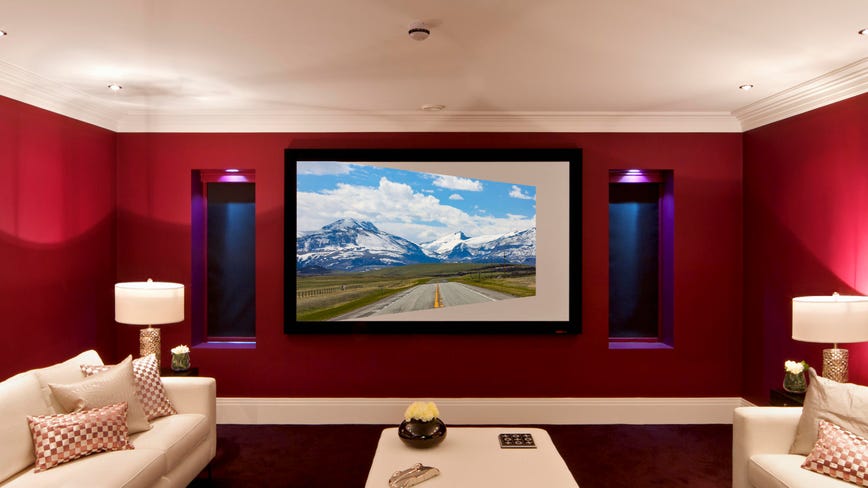
Note how the image doesn’t fit the screen. Keystone correction could fix it, but the image won’t look as sharp.
Geoff Morrison/CNET and phototropic/Getty Images
If you’ve ever tried to set up a projector you’ll be familiar with the struggle of getting a perfectly rectangular image on the wall. This is because the lens of projector has to be perpendicular to the screen. If any corner of the projector is closer to the screen than its opposite, you’ll get some kind of trapezoid instead of a nice rectangle.?
This isn’t a new problem, and for decades projectors have had a “feature” to counter this issue. Called keystone correction, or keystone adjustment, it will technically make a rectangle out of your trapezoid… so to speak. If you care at all about picture quality, don’t use it. Here’s why.
The problem with not being perpendicular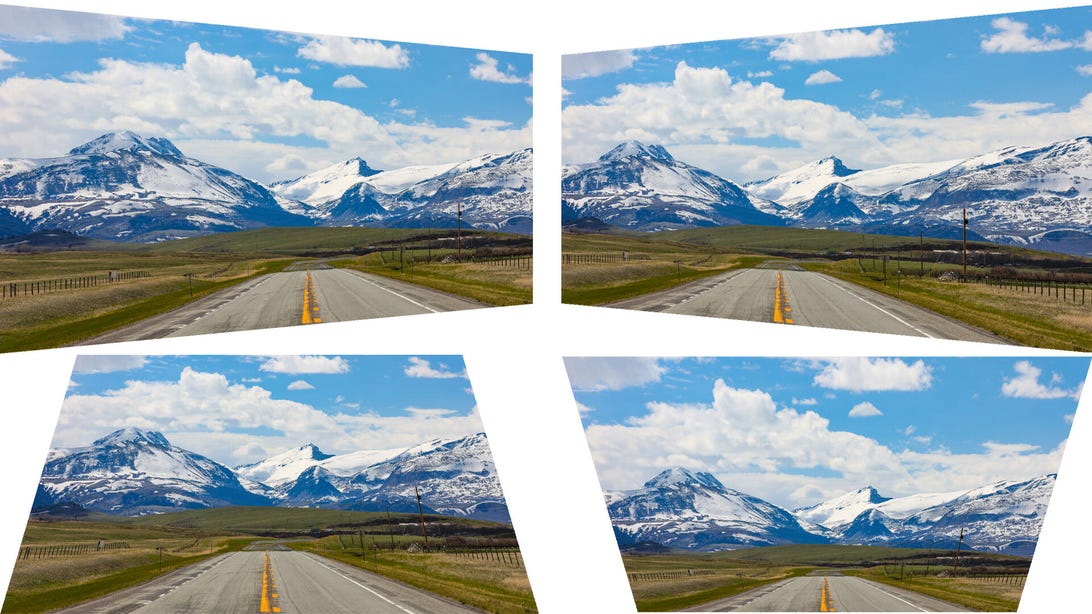
Examples of what your image might look like if your projector isn’t exactly center. You would have to turn or tilt the projector to get it to line up, resulting in a trapezoid. Clockwise from top left: PJ too far right, too far left, too high, too low.
Geoff Morrison/CNET
Projectors are a two-piece system: the projector and the screen. Even if you’re using a wall or the side of your house instead of a screen, that still counts. All projectors use rectangular imaging chips to create an image, and it’s crucial that the image sent by the chip is exactly perpendicular to the screen. Every corner needs to be the same distance to the screen as its opposite corner and if that doesn’t happen, the shape gets distorted.
Even if you’ve never used a projector, you’ve probably seen this effect in action. Ever used a flashlight? Point it directly at the wall and you’ve got a circle. Point it on the ground ahead of you, and it’s an oval. Same concept.?

Some projectors have a feature called lens shift, which mechanically adjusts how the imaging chips, lens and screen line up. Lens shift lets you move the image slightly on the wall without hurting image quality, but its adjustment range is limited. If you’re beyond how far the lens shift can adjust, or the projector don’t have lens shift at all, misplacement will cause the image to go askew.?
Most screens have black borders so you don’t need exact placement to the picometer, but it’d be a shame to spend money on a projector, and time on installing it, only to be annoyed at the visible edges when you’re using it.
Which is why every projector has keystone correction. That doesn’t mean it’s good.?
Keystone: Not even once
Keystone correction aims to solve electronically what is inherently an optical problem. The projector will digitally adjust the image in the opposite direction to offset the trapezoid. So if the image is, say, smaller on the left than the right, the projector can reduce the size of the right side so it appears rectangular again. Clever, right? Sort of. Unfortunately there ain’t no such thing as a free lunch.
All modern projectors use one of three technologies, DLP, LCD, or LCOS. All of them have a fixed number of pixels, or picture elements, used to create an image. There’s no way to change the number of pixels on one of these chips. These imaging chips are generally fixed in place as well.?
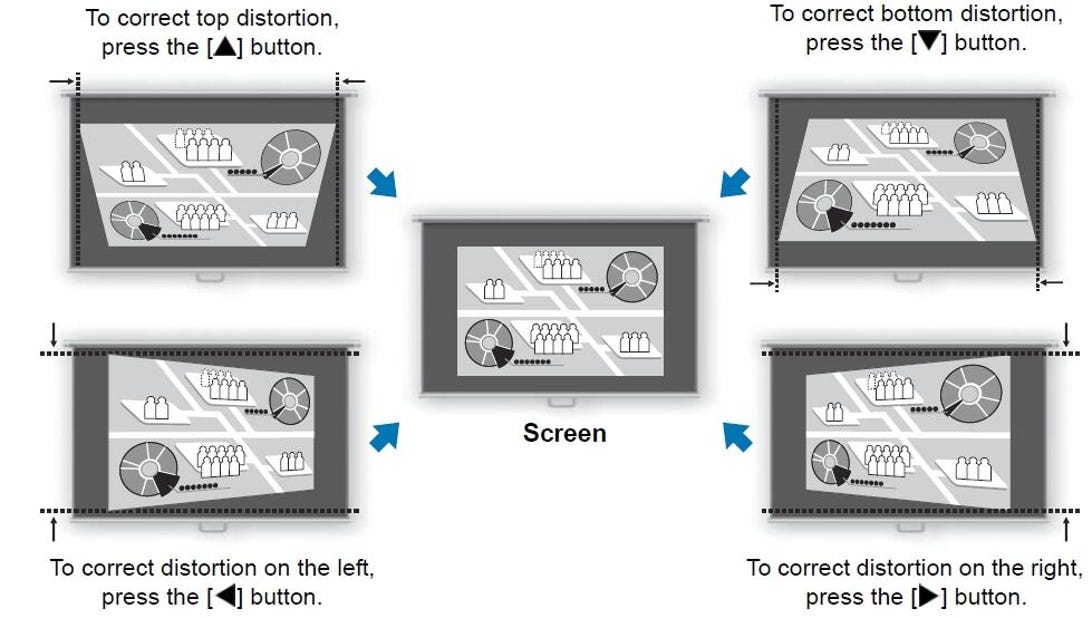
How a projector not lined up correctly might look on screen, and the buttons to press to “fix” the issue, via a business projector’s owner’s manual.
Canon
What keystone correction does is scale the image smaller, and then further process it to form the shape required to “look” rectangular. Or to put it another way, it’s drawing a trapezoid inside a rectangle, but because the projector and image itself is skewed, that trapezoid now looks rectangular.
Both of these things reduce image quality. Scaling, in this case, reduces the number of pixels used to create the image. You’re only using a portion of the imaging chip to create the new image shape. The more you adjust the keystone, the fewer pixels are used, further softening the image.?
Most projectors don’t have much processing power, so this scaling might further soften the image, or it might introduce other noticeable artifacts. Changing the shape of the image is a further processing challenge and can add additional artifacts.
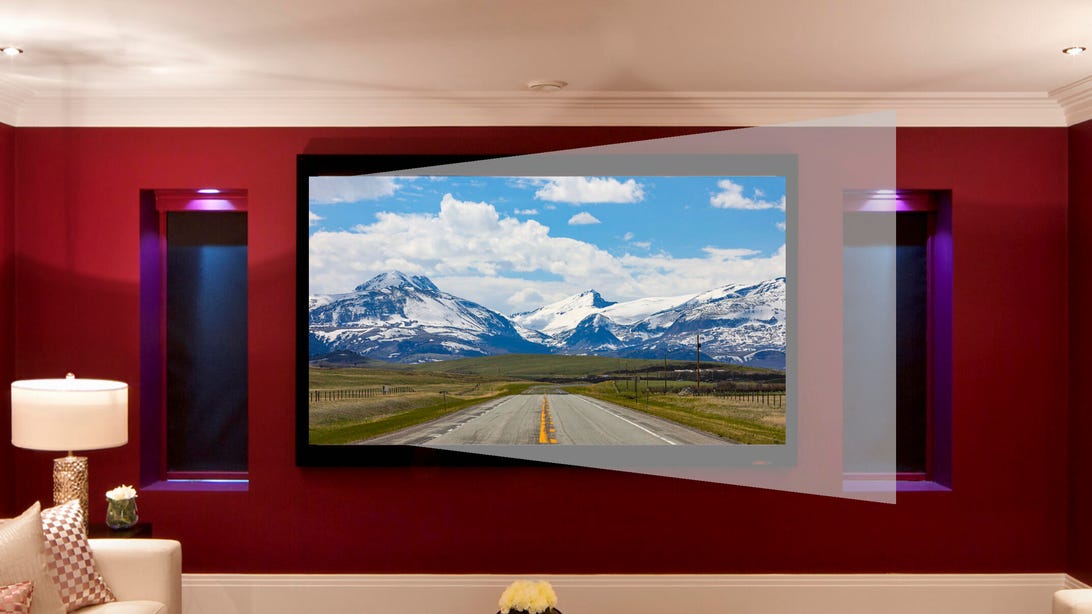
Digital keystone adjustment might get you a rectangular image, but the projector’s imaging chips are all still active, so you’ll get a dark gray “image” projected where the image isn’t. In this illustration, the image at the top of the article has been “adjusted” but the projector hasn’t moved. So you get a rectangular image but also the original trapezoid of the angled imaging chips.
Geoff Morrison/CNET and phototropic/Getty Images
And if that weren’t enough, it’s impossible to turn “off” the pixels you’re not using. So there’s still going to be light projected on the screen from these unused pixels, which appears inside the trapezoid shape you’ve been trying to avoid. In an extreme situation, you could have a noticeable gray image beyond the screen area. Inelegant at best, distracting at worst.
Related on CNET
- Best Home Theater Projector for 2022
- Best 4K Projector for 2022
- How to Set Up Your New Projector for the Biggest, Best Movie Night Ever
- Big TV vs. Projector: Pros and Cons of Huge Home Theater Screens
The solution? Place the projector properly
There’s no better solution than not having the problem to begin with. Proper projector placement placates potential picture perils. Or to quote the ancient adage from prehistory: measure twice, cut once.?
If you’re mounting your projector permanently, double- and triple-check the mount is in the correct place for your projector. This is crucial. Most projectors, especially those based on DLP, have their lenses offset from the center of the projector. Ideally, your mount will have some adjustment “wiggle room,” but it might not.?
Usually you can download a mounting template and other info from the manufacturer’s website.?
Also consider that most projectors, again especially those based on DLP, have an “upward throw.” Which is to say, they create an image several inches above the top of the projector (or below, if it’s mounted on the ceiling). You can’t tilt the projector down since that, too, creates a trapezoid. Again, this info is on the company’s website.
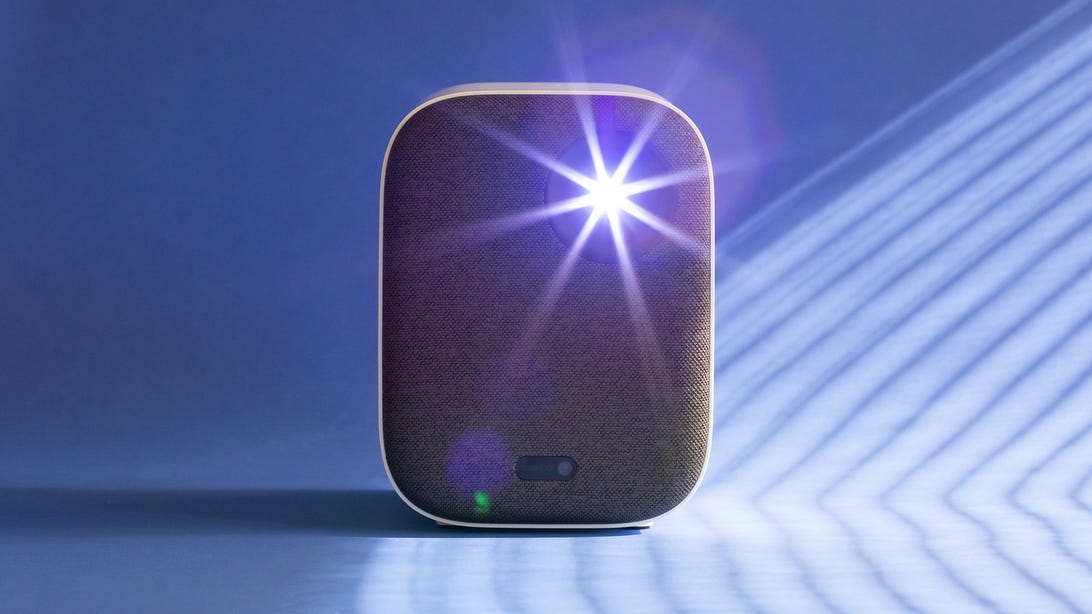
Many portable projectors have automatic keystone correction. It’s worth turning off if you’re able to get the projector properly positioned.
Geoff Morrison/CNET
So yeah, if you absolutely have to use keystone correction, go for it. But it should only be used as a last resort in situations where you physically can’t place the projector in its proper position. If you’re mounting it, it’s best to spend the time and get it right the first time and not rely on image-reducing electronic trickery to fix a bad install. ?
As well as covering TV and other display tech, Geoff does photo tours of?cool museums and locations around the world, including?nuclear submarines,?massive aircraft carriers,?medieval castles, epic?10,000-mile road trips?and more. Check out?Tech Treks?for all his tours and adventures.
He wrote a?bestselling sci-fi novel?about city-size submarines, along with a?sequel. You can follow his adventures on?Instagram?and on his?YouTube channel.